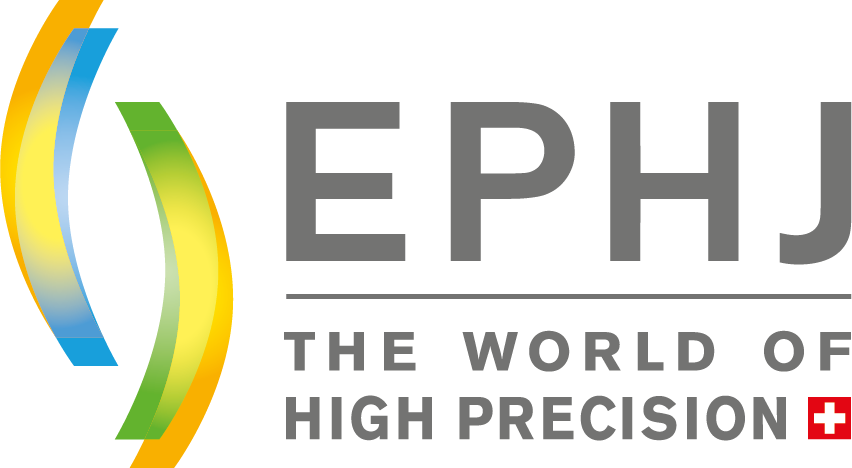Come to the world of high precision!
2022 saw a strong recovery in the high-precision sectors, especially in the Swiss watch and jewellery industry, which has set new records for export sales – a development we are delighted to see. This trend had already become clear during the last EPHJ Show in June. Our subsequent satisfaction survey of exhibitors revealed that 84% of them had done business at the show or had very promising prospects for the near term – further evidence of just how valuable and useful EPHJ is. EPHJ is and will remain the only platform in the world where nearly 20,000 Swiss and international visitors meet every year representing all the major watch and jewellery brands, as well as medtech and microtechnology companies. There are no other opportunities for meeting all these players in the space of just a few days. EPHJ’s success over the last 20 years is the finest demonstration of this.
Watchmaking and the automotive industry? Reinventing the incredible Porsche 356…
The Bureau d’Étude Mécanique (BEMRC), a company that develops industrial projects and innovative products and excels in watchmaking and microtechnology, is responsible for the design and assembly of the high-tech 365RE vehicle, an electric replica of the famous Porsche 365. The chassis of the very first one planned for 2023 has just arrived and its coating, which is ultra-strong – including inside the criss-crossing tubular structure – says a lot about the thought and care that went into it.
Miniaturising components with MultiEtch
LIGA (the German acronym for lithography, electroplating, moulding) is an additive manufacturing process used to create 3D high-aspect ratio microstructures. It can be used to fabricate complex geometries that are impossible to achieve by means of conventional manufacturing technologies. Not only does it combine low cost, rapid deployment, superb surface quality, flexible production run sizes and micrometre precision, but it is just as good as subtractive manufacturing processes. In fact, many consider it the future of miniaturisation.
Watch Medtech Challenge: five finalists for the 2023 show
Any entrepreneurial success – just like any failure – always starts with an idea. The difference lies in the execution and in the network that emerges around the project to help make it a
realistic and realisable proposition. That’s what the Watch Medtech Challenge – coorganised by EPHJ and Fondation Inartis since 2018 – is all about: supporting companies as they expand their range and activities. Discover the 5 brilliant finalists of the 2023 edition: Tritec, 3D Precision, Abatec, Eposint and Polycrystal.
The first finalist project was submitted by Tritec, a company that manufactures fluorescent and phosphorescent pigments. For this project, they will research the use of Swiss SuperLumiNova pigments in fluorescence immunochromatography tests. Used with special analysers, these dry fluorescence analysis strips work on the principle of photoelectric detection. They are used for diagnostic purposes and in vitro tests by laboratory personnel in medical establishments and elsewhere.
The second project, submitted by 3D PRECISION, involves 3D printing, which is increasingly being used in prototyping and watchmaking subcontracting for special parts. The project involves breast reconstruction after cancer surgery.
The third project, submitted by Abatech, aims to take LED UV pens currently used for curing glues and use them in dermatology by developing portable Wood’s lamps. Since they operate on the same wavelength, the two devices offer interesting potential synergies for use in diagnostics and phototherapy.
Eposint, the fourth finalist, submitted a project that involves applying polyamide (Rilsan®) and ECTFE coatings to surgical instruments, scissors, pliers, forceps and tubular rods, thereby ensuring electrical insulation during high-frequency surgery.
The fifth project was submitted by Polycrystal, a company specialising in non-porous transparent ceramics whose key benefit is how purely transparent they are. One potential application is in orthodontic bands, which tend to turn yellow over time. Using this interesting material would mean cleaner and brighter smiles.
A timepiece at the interface between fine watchmaking and life sciences
Promoting synergies between industrial fields and cultivating interfaces between disciplines: Fondation Inartis cultivates an innovative vision that cuts across multiple industries. As an EPHJ partner for the last five years in connection with the Watch Medtech Innovation Challenge, Fondation Inartis supports watch industry professionals in their efforts to develop medtech projects. The Show is a fine opportunity to explore the extraordinary expertise of the watchmaking industry, which is capable of creating and deploying the world’s smallest, most complex and reliable components. It’s hardly surprising that the medtech world is keen to call on them.

